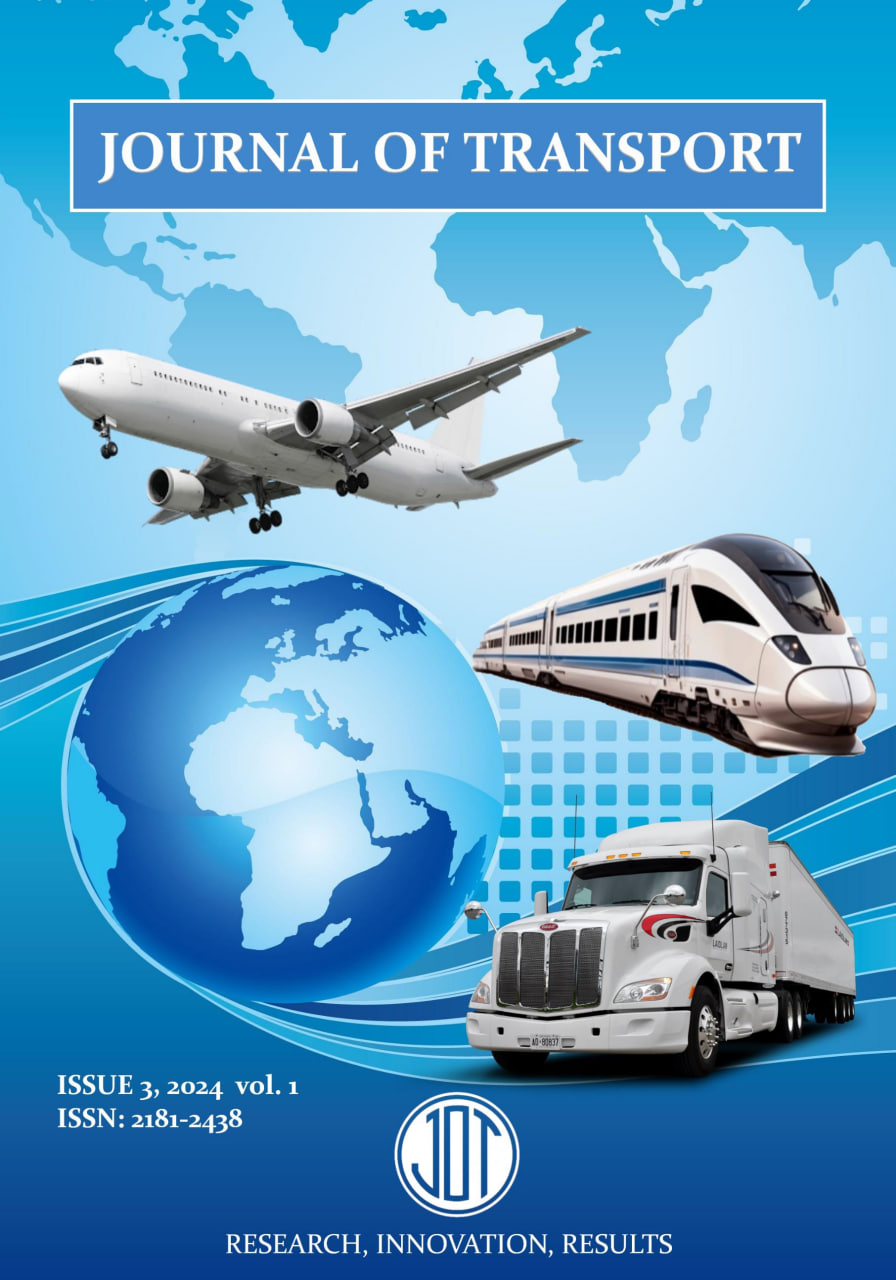The importance of calibration in modeling vehicle car-following behavior
Abstract
Nowadays, one of the important issues is the safe traffic on the roads and their arrival at their destination without delay and spending less time and energy. For this purpose, by simulating traffic movements in computer programs, the necessary changes are made without spending a lot of time and money, getting the results. In this article, we considered the importance of calibrating input data in the simulation of traffic movements. In this process, several literatures on calibration were analyzed, experimental work was conducted, conclusions were drawn based on the results, and tasks to be carried out at the next stage were determined.
References
[2] Ranjitkar, P., Nakatsuji, T., Kawamua, A., 2005. Car-following models: an experiment based benchmarking. Journal of the Eastern Asia Society for Transportation Studies 6, 1582–1596.
[3] Brackstone, M., McDonald, M., 1999. Car-following: a historical review. Transportation Research Part F: Traffic Psychology and Behavior 2, 181–196.
[4] Pipes, L, 1953. An operational analysis of traffic dynamics. Journal of Applied Physics 24(3), 274–281.
[5] Gazis, D.C., Herman, R., Rothery, R.W., 1961. Nonlinear follow-the leader models of traffic flow. Operations Research 9, 545–567.
[6] Treiber, M., Hennecke, A., Helbing, D., 2000. Congested traffic states in empirical observations and microscopic simulations. Physical Review E 62, 1805–1824.
[7] Bando, M., Hasebe, K., 1995. A dynamical model of traffic congestion and numerical simulation. Physical Review E 51(2), 1035–1042.
[8] Helly, W., 1959. Simulation of bottlenecks in single-lane traffic flow. In: Proceedings of the Symposium on Theory of Traffic Flow, Research Laboratories, General Motors, New York.
[9] Gipps, P.G., 1981. A behavioral car-following model for computer simulation. Transportation Research Part B: Methodological 15(2), 105–111.
[10] Wiedemann, R., 1974. Simulation des strassenverkehrsflusses. In: Proceedings of the Schriftenreihe des instituts fir Verkehrswesen der Universitiit Karlsruhe, Germany.
[11] Abbas, M.M., Higgs, B., Adam, Z., Flintsch, A.M., 2011. Comparison of car-following models when calibrated to individual drivers using naturalistic data. In: Proceeding of the 90th Annual Meeting of the Transportation Research Board, Washington, D.C.
[12] Kesting, A., Treiber, M., 2008. Calibrating car-following models by using trajectory data: a methodological study. Transportation Research Record 2088, 148–156.





